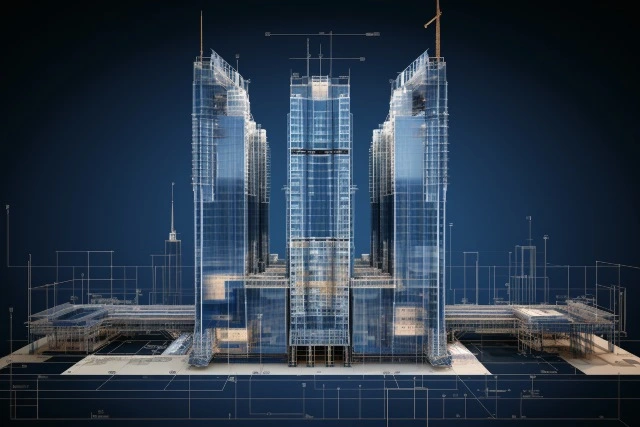As technology advances, businesses leverage digital solutions to optimize operations and increase efficiency. One of the most powerful innovations in this space is the virtual twin—a cutting-edge technology that is transforming commercial real estate and various industries. But what exactly is a virtual twin, and how can it help your business?
What is a Virtual Twin?
A virtual twin is an advanced simulation of a real-world object, system, or process that utilizes real-time data to mirror its physical counterpart. Unlike a simple digital twin, a virtual twin enhances decision-making by offering interactive and immersive experiences through advanced visualization and AI-driven simulations.
Why Businesses Are Investing in Virtual Twins
Organizations that adopt virtual twin technology benefit from:
- Cost Savings: Reduce operational expenses by testing changes virtually before implementation.
- Performance Optimization: Gain insights into system performance, enabling proactive maintenance.
- Improved Tenant Experience: Simulate space usage and optimize layouts for enhanced occupant satisfaction.
- Sustainability Planning: Model energy efficiency strategies to meet regulatory requirements and reduce carbon footprints.
How Virtual Twins Are Revolutionizing Commercial Real Estate
Virtual twin technology is becoming a must-have tool in commercial real estate, providing building owners, property managers, and investors with actionable insights. Here’s how it enhances key areas:
1. Predictive Maintenance for Reduced Downtime
By simulating wear and tear, virtual twins can predict system failures before they occur, reducing maintenance costs and preventing unexpected disruptions.
2. Energy Efficiency Optimization
Through energy modeling, virtual twins identify cost-effective interventions to improve sustainability and reduce energy waste.
3. Enhanced Space Utilization & Tenant Engagement
Virtual twins analyze space usage in real-time, helping property owners optimize layouts to increase efficiency. Tenants can also experience spaces through immersive digital models.
4. Asset Valuation & Risk Management
By aggregating building data, virtual twins provide accurate asset valuations, helping investors make informed decisions and mitigate financial risks.
5. Disaster Preparedness & Safety Simulations
Virtual twins allow building managers to simulate fire, flood, or security breach scenarios, ensuring better emergency response planning.
Virtual Twins vs. Digital Twins: Understanding the Difference
While the terms virtual twin and digital twin are often used interchangeably, they serve different functions:
| Feature | Virtual Twin | Digital Twin |
| Purpose | Simulates scenarios & decision-making | Mirrors physical assets in real-time |
| Technology | Uses VR/AR, AI, and 3D simulations | Uses IoT and real-time data |
| Use Case | Design, planning, optimization | Maintenance, monitoring, operations |
| Benefit | Allows for extensive testing before execution | Provides real-time operational insights |
Integrating Virtual Twins with Proptech Solutions
To maximize the potential of virtual twins, seamless data integration is key. That’s where ProptechOS comes in.
Why Choose ProptechOS for Virtual Twin Implementation?
- Unified Building Data: Connect multiple data sources into one intelligent platform.
- AI-Driven Simulations: Test different property scenarios for maximum efficiency.
- Real-Time Insights: Make data-driven decisions with up-to-the-minute analytics.
Get Started with Virtual Twins Today
Are you ready to optimize your property and increase efficiency with virtual twin technology?
Try ProptechOS for free and take the next step in smart real estate innovation.
Definition of a Virtual Twin in Proptech
A virtual twin in proptech is a dynamic digital representation of a physical building or real estate asset that creates a bi-directional connection between the physical and digital worlds. Integrating real-time data from IoT sensors and building management systems with an interactive 3D model mirrors the asset’s physical and functional characteristics. AI and machine learning enable stakeholders to monitor performance, simulate scenarios, optimize operations, and manage the asset throughout its lifecycle.

Dr. Erik Wallin
Chief Ecosystem Officer, and founder of ProptechOS and RealEstateCore is recognized as a leader in Building Operating Systems (BOS) and making the buildings of the world smarter. He holds an MSc and a Ph.D. in Media and Computer Science from KTH Royal Institute of Technology.
Read his full bio and information here.

